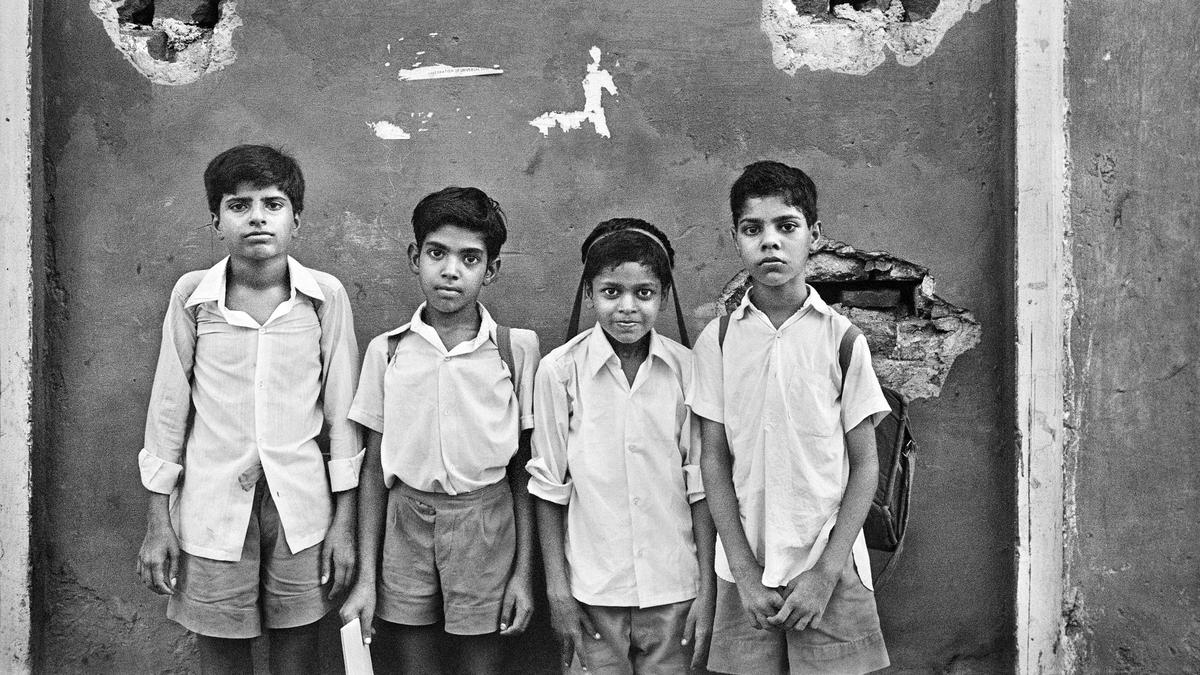
Raghu Rai’s ‘A Thousand Lives’:a40-year journey
The Hindu
250 black-and-white images spanning the formative years of the photographer’s career reveal an India that feels both familiar and foreign
“At no given time am I without a camera,” asserts Raghu Rai, one of India’s most important photographers, who is the subject of a major exhibition at the Kiran Nadar Museum of Art in New Delhi. Now 81, Rai has been taking pictures for over half a century — since he was 23, when his elder brother introduced him to the camera, eventually making a name for himself as a distinguished photojournalist and editor who travelled the length and breadth of India to capture its essence.
“I was never just a photographer on assignment. When I was working with The Statesman and later India Today, I was sent to shoot specific stories, but I would document the entire journey and take my camera out on the plane, on the train, sitting in a taxi, or even a bullock cart, photographing the people, landscape and life,” he shares. It is this journey spanning the formative years of Rai’s career, from 1965 to 2005, that is reflected in over 250 striking black-and-white images on display.
Named A Thousand Lives, the exhibition pays homage to India and the passionate journey of a photographer who lived a thousand lives in its pursuit. India is seen in its many faces, in moments of peace and protest, the spiritual and the mundane, glorious landscapes juxtaposed with the stark extremes of wealth, power and poverty. In Rai’s photographs, the political landscape of Delhi, where he lived and worked, is ever-present, yet treated with an intimacy that renders it vulnerable.
Portraits of figures such as Indira Gandhi and her political adversary Jayaprakash Narayan, or JP as he was known — hung in two adjacent rooms — capture their fragility. They reveal the vulnerability behind Gandhi’s stern facade, whether she is waving goodbye to her grandchildren as she departs from the Prime Minister’s residence, or in moments of solitary contemplation before addressing a large political rally. JP is depicted upholding the conscience of the country, both alone and amidst a crowd, until his eventual passing in 1979 in Patna. This poignant moment is captured with his body held by Chandra Shekhar, Atal Bihari Vajpayee, and other prominent leaders who would ascend in political stature in the coming years.
Beyond the political realm, Rai’s photojournalism led him to spiritual leaders such as the Dalai Lama and Mother Teresa — experiences that profoundly impacted and influenced his way of seeing. The Dalai Lama is portrayed enjoying a meal or playing with a cat in Dharamshala, while photographs of Mother Teresa show the dedication inherent in a life of service.
It was this spirit of service that influenced Rai during his early encounters with Mother Teresa. “I was very frustrated with the state of the media. Most stories were being done from Delhi, and covering Indian politics was becoming monotonous for me. I wanted to photograph the people, the ordinary people, who are the true soul of this country,” says Rai, who ventured deep into villages and urban centres as far as Kanyakumari, Kolkata, Jaipur, Varanasi, Ladakh and Srinagar ––capturing the extraordinary within thousands of ordinary Indian lives.
Beggars, theatre artists, shop owners, tailors, freight carriers, taxi drivers, soldiers, devotees, street gamblers, slum dwellers, school-going kids, nuns, and transwomen — all find a place of dignity in his photographs, bringing to the fore the significant but often overlooked aspects of ground reality. Animals too roam freely — dogs, horses, donkeys, monkeys, cocks, goats, parrots, and pigeons — in harmony with their street surroundings familiar to every Indian.

President Donald Trump is now facing renewed scrutiny over his links to Epstein. During his campaign, Trump said he would have no problem releasing the Epstein files. But since returning to political life, he has dismissed them as fabrications, claiming they were pushed by his Democratic opponents. Let’s take a look at what Epstein files are and why it has once again become the center of political controversy in the United States.





















 Run 3 Space | Play Space Running Game
Run 3 Space | Play Space Running Game Traffic Jam 3D | Online Racing Game
Traffic Jam 3D | Online Racing Game Duck Hunt | Play Old Classic Game
Duck Hunt | Play Old Classic Game










